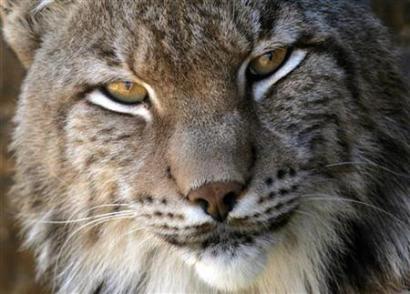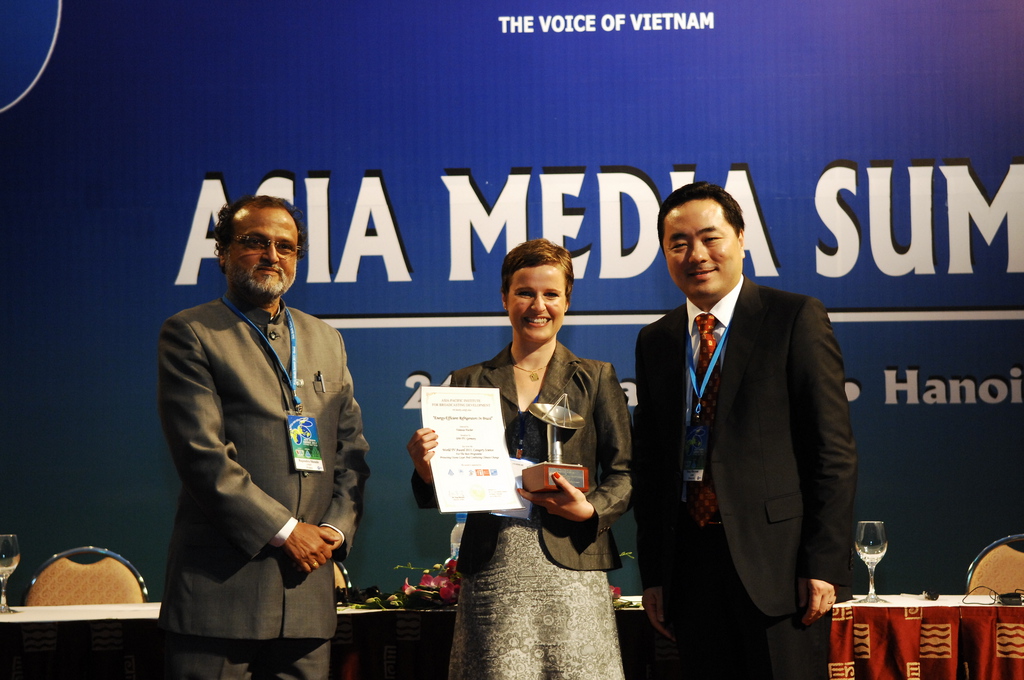Guerrilla Gardening

If you haven’t heard of guerrilla gardening, it’s a pretty simple concept: find an empty plot of land, any plot (even if it’s public property) and start planting. It doesn’t matter what: flowers, herbs, fruit, etc. The idea is to transform often abandoned or neglected patches of grass or shrub into rich, verdant vegetation, especially in an urban atmosphere.
According to The Local, Germany’s capital Berlin is actually the perfect example of guerrilla gardening catching on and taking off. Because Berlin is such a green metropolis (more than 40% of the city is covered in water, forests and green spaces), there’s a lot of space for guerrilla gardening enthusiasts.
If you’re a guerrilla gardener yourself, share some stories and pictures with us!
Award for GLOBAL IDEAS report on green fridges in Brazil
We have won! Again!
GLOBAL IDEAS reporter Vanessa Fischer, who you can see in the picture above, received the AIDB World Award today for “Science and Environment.” The trophy was awarded by the Asia-Pacific Europe Partnership Committee in Hanoi. Vanessas report “Energy-efficient refrigerators in Brazil” was called the “Best Programme Protecting Ozone Layer and Combating Climate Change.” As you can imagine, we all are over the moon about that award. 🙂
A Goal for Green
The FIFA Women’s World Cup will kick off in Germany on June 26th and runs until July 17th, and it looks set to be an exciting tournament with the some of the best teams and players in the world. FIFA has also made a strong commitment to making this year’s world cup a green one.
In February, the organization launched its environmental initiative “Green Goal 2011” with the aim of assessing the World Cup’s environmental impact and finding ways to reduce that impact throughout the tournament. That means organizers are monitoring things like energy and water consumption, trash disposal, transportation and food as part of an eco-friendly management system in all the stadiums.
Ban on plastic bags?
“Fifty years ago, the single-use plastic bag was almost unheard of. Now we use them for a few minutes and they pollute our environment for decades,” says Janez Potocnik, Environment Commissioner of the the European Union. Each European uses 500 of these bags each year, most of them are used just once. In 2008 alone a total of 3.4 million tonnes of plastic bags were produced in Europe, that makes the same weight as two million cars.
Starting this week (18. May) the European Commission is seeking a solution. The approach is planed to be made with the help of European people and the bags manufacturers. The Commission calls everyone to a online-poll. Finally a tax or a ban on plastic bags is considered. The Commission called for suggestions on how to deal with the billions of bags used in the European Union each year. The public consultation will close at the end of August.
Extinction in Europe

Biodiversity is important to protect, especially in the world’s rainforests, oceans and mountain ranges where we often find rare species. But biodiversity is important in “ordinary” places, too – like continental Europe. The region boasts a lot of its own unique species, like the Iberian lynx in Spain (pictured above) and the Bavarian pine vole in the Alps. But those animals might not be around much longer.
A new report from the European Union shows that hundreds of species in Europe are now facing extinction. In fact, that assessment includes about up to a quarter of the species native to the continent. All types of animals and plants could vanish, including birds, reptiles, mammals and butterflies.
The problem stems from a variety of factors, including pollution and climate change. The EU has set forth some targets to protect Europe’s biodiversity, like restoring ecosystems. But there is no funding to back those proposals, so some critics don’t believe anything will change.










Feedback